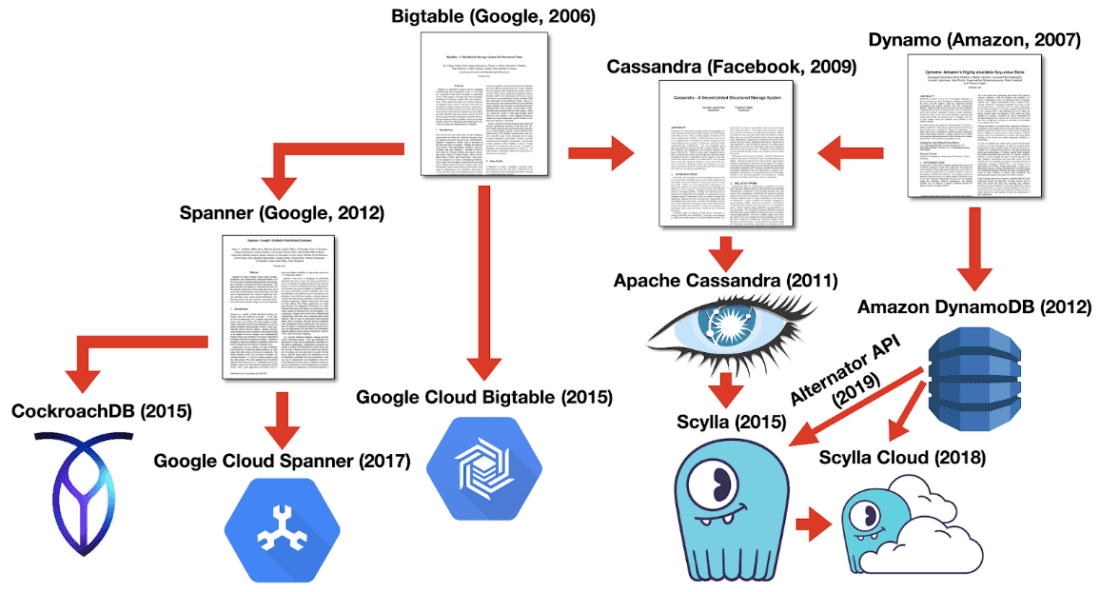What is the difference between NoSQL vs distributed SQL? First, consider the difference between NewSQL vs distributed SQL.
Distributed SQL databases are built from the ground-up, while NewSQL databases tend to add synchronous replication and sharding technologies to existing client-server relational databases like PostgreSQL. However, both achieve most of the same goals.
What is the more general difference, then, between NewSQL vs NoSQL?
The basic difference between NewSQL and NoSQL is that NoSQL databases use documents, graphs, a key-value pair, or wide column stores without a typical schema. NewSQL, an even more recent development in database systems, seeks to retain qualities of a relational database yet achieve the scalable properties of NoSQL.
Yet to really understand how NewSQL systems work, it is important to explore the difference between SQL, NoSQL, and NewSQL. This is because NewSQL architecture is really a reaction to both SQL and NoSQL approaches.
Relational databases arrange data into different columns and rows, associating each row with a specific key. Almost all relational database systems use structured query language (SQL).
The underpinning concepts of SQL relational databases exist to maintain the reliability of transactions and are represented by ACID: Atomicity, Consistency, Isolation, Durability.
Atomicity sees a transaction as an all or nothing prospect: it is completed as a whole or not at all. Consistency ensures the database remains stable with or without changes. Isolation ensures that multiple transactions do not interfere with each other. And durability refers to any permanent effects changes to the database may have.
However, RDBMS suffer greatly from some major drawbacks although they also provide exclusive features.
- Rigid Data Modeling. A primary limitation of the RDBMS is the inherent rigidity of organizing the data into the specific structure in tables and relations.
- Diversity. The complexity of big data also limits the usefulness of RDBMS; complex images, numbers, and multimedia data are difficult to access, store, and process.
- Inefficient Use of Space. It’s necessary to define the size of all the attributes when we define the schema, but not all records fit into the given data type or use their full space.
- Heavyweight Changes. Any changes one record requires must be applied to all records, and these heavyweight changes can be infeasible and costly.
- Inefficient for Big Data. SQL is unsuitable for data at high volume, in great variety, or traveling at velocity, making it inefficient for cloud-based applications.
NoSQL developed to help process massive amounts of unstructured data rapidly and is best understood as an alternative to relational databases. The most common interpretation of NoSQL is, “Not only SQL,” meaning that some systems may yet support SQL-like query languages.
NoSQL systems handle large amounts of both structured and unstructured data, and they do it quickly due in part to their distributed nature and non-relational, ad-hoc approach to organizing data. NoSQL was devised to work around the limitations of SQL and provide fast scalability when handling big data applications or dealing with unstructured data platforms.
Core NoSQL concepts include:
- Lack of schema. Supports structured, semi-structured, and unstructured data.
- Auto balancing. Automatic division of data among multiple servers, without assistance from applications.
- Integrated caching. Data cached in system memory to increase performance and data throughput for high reliability and scalability with a simple query language and data model.
- The BASE transaction principle. As ACID provides foundational concepts for SQL, BASE principles (Basically Available Soft-state, Eventually consistent) ensure NoSQL reliability.
NoSQL databases also experience several drawbacks, which include:
- Lack of consistency. Prioritizing availability over consistency is less ideal for functions such as financial transactions.
- Lack of analytics. A relational model is important for processing data in analytics, which means increased cost overhead as the whole database needs to be converted using a relational model.
- Lack of standardization. No specific, standardized language.
- Security. At the elemental data level NoSQL does not provide security.
- Transactional nature. High-volume transactions demand a highly scalable, strongly consistent database, so NoSQL fails when the database needs to perform this type of task.

